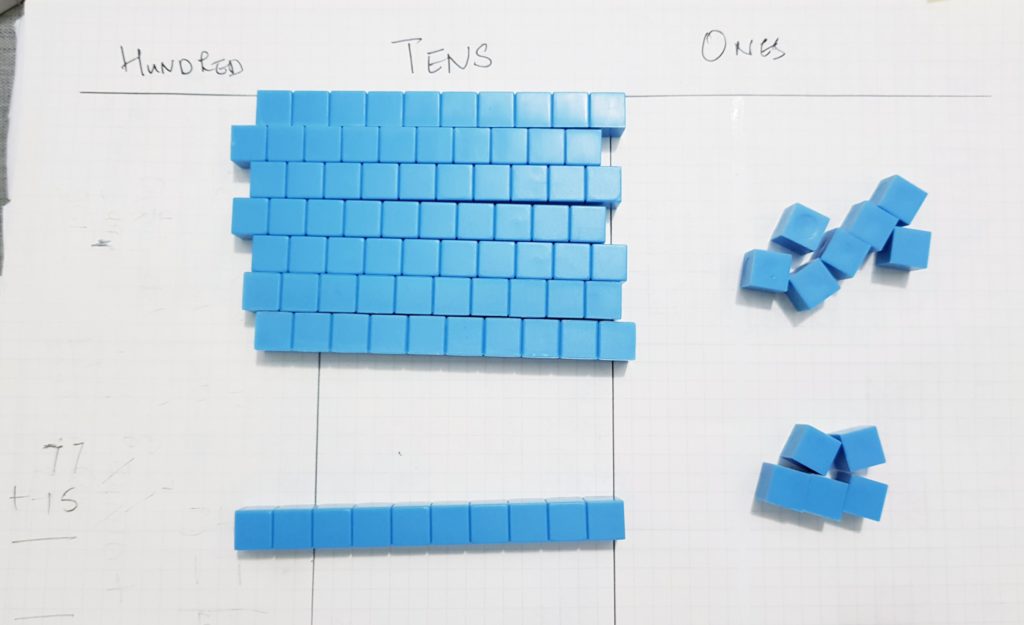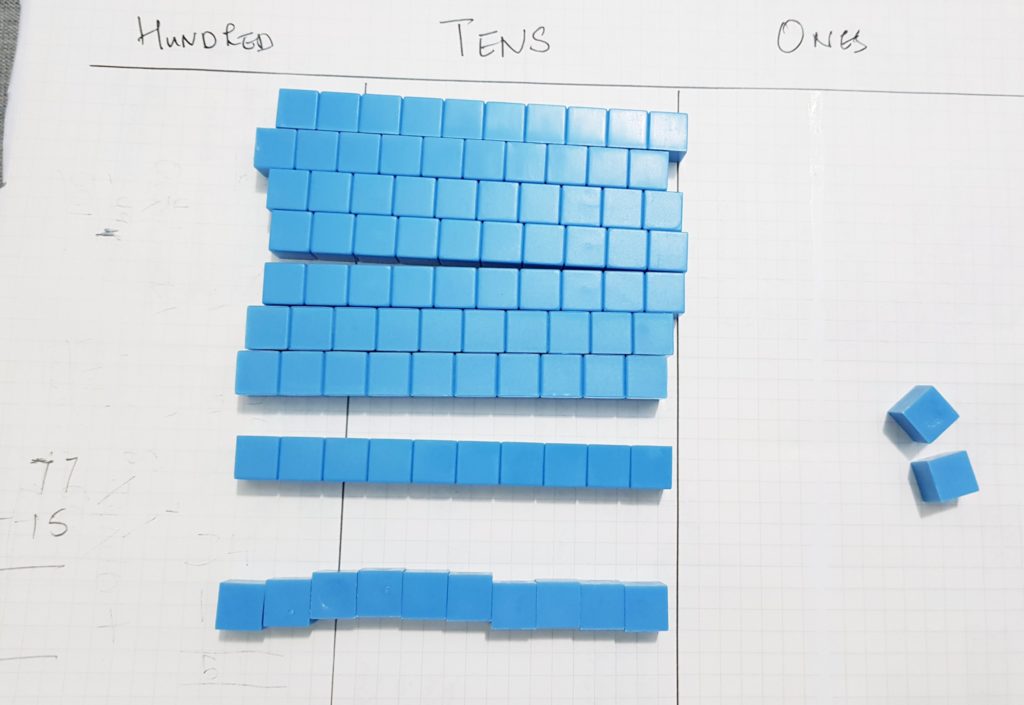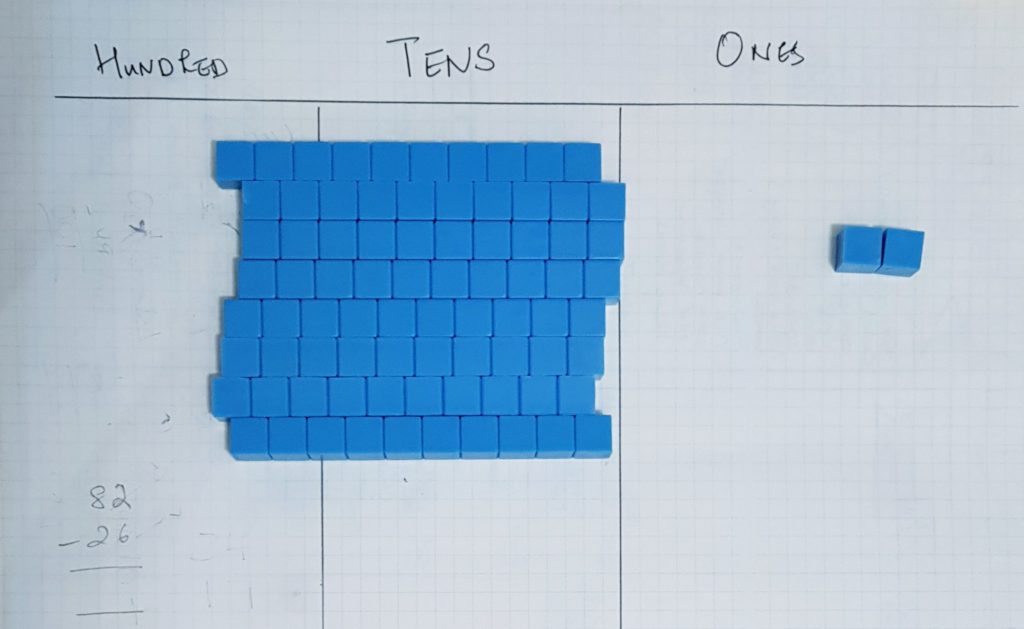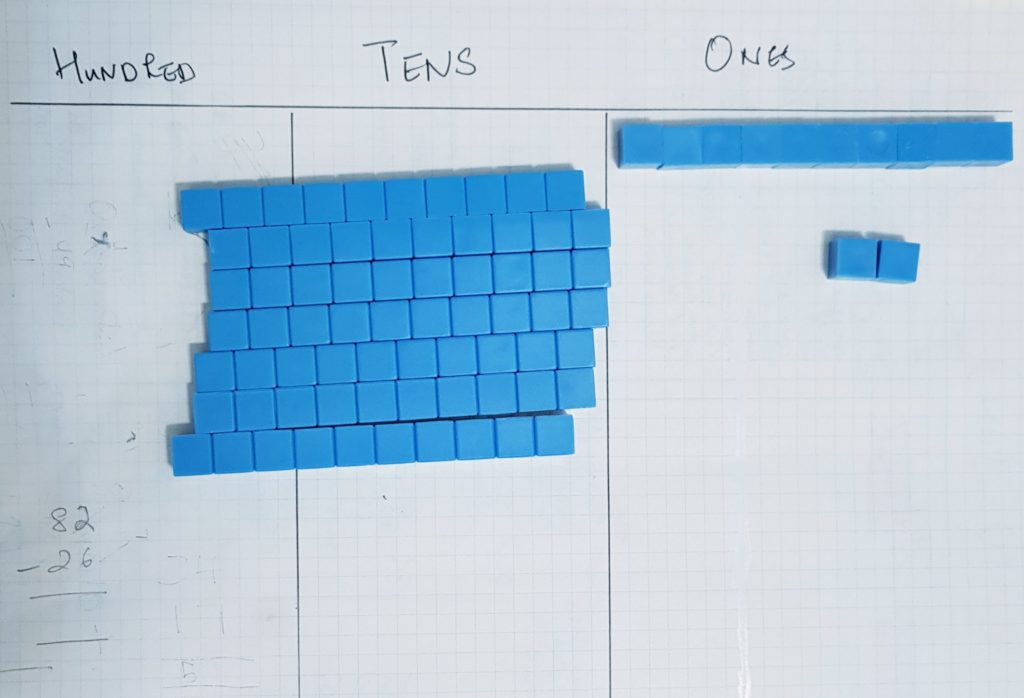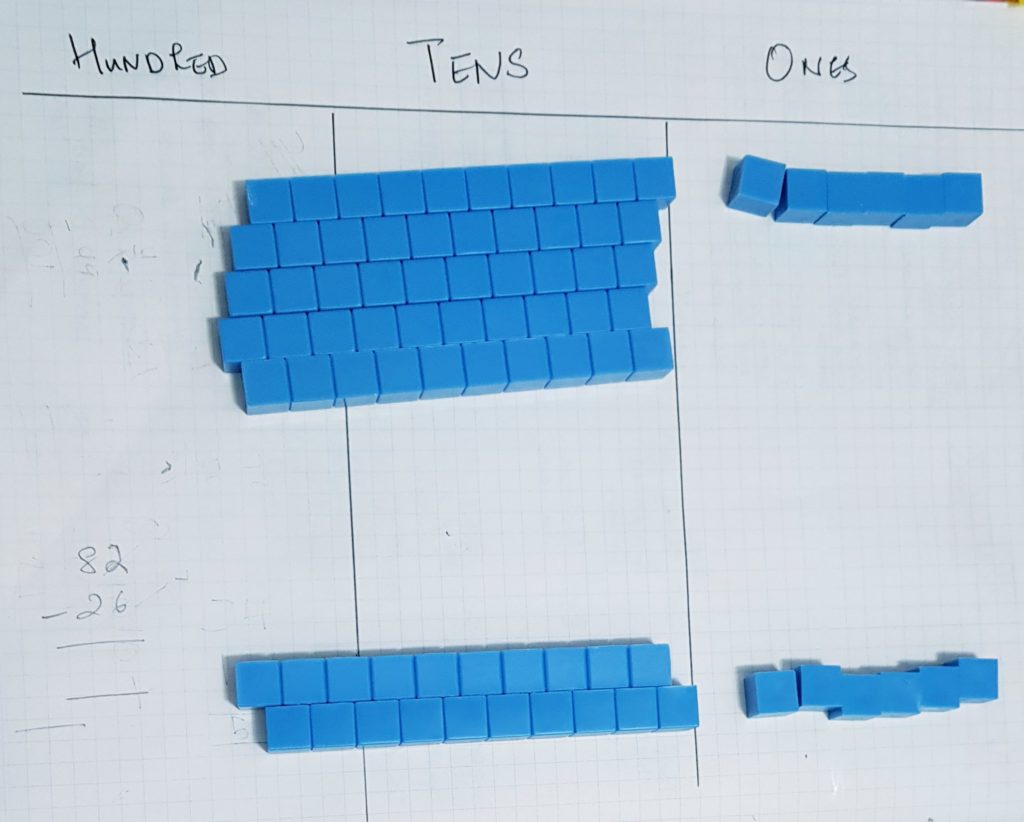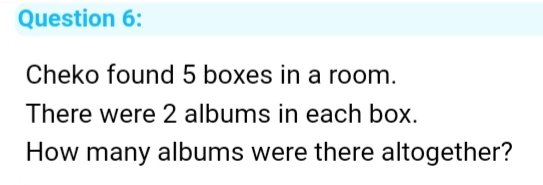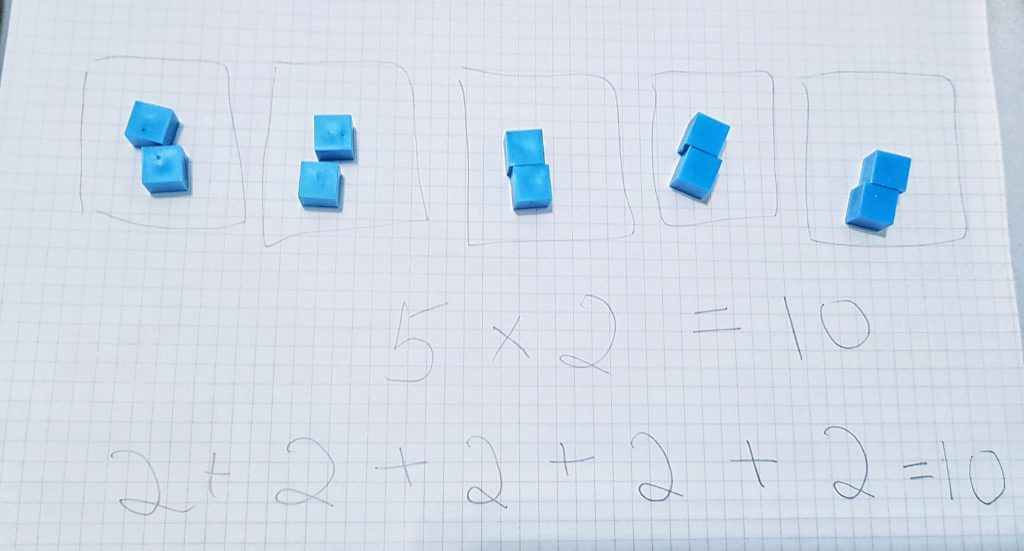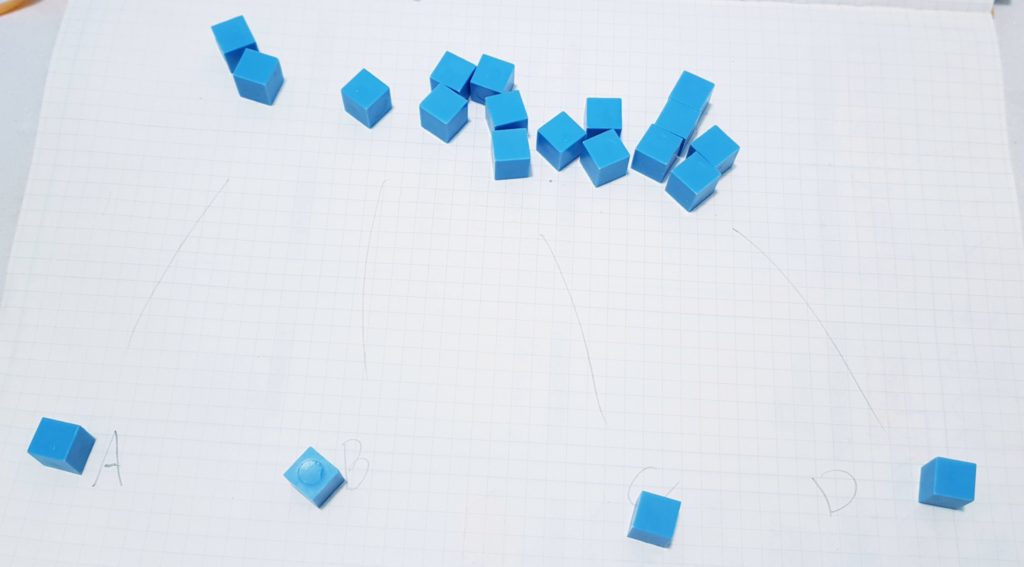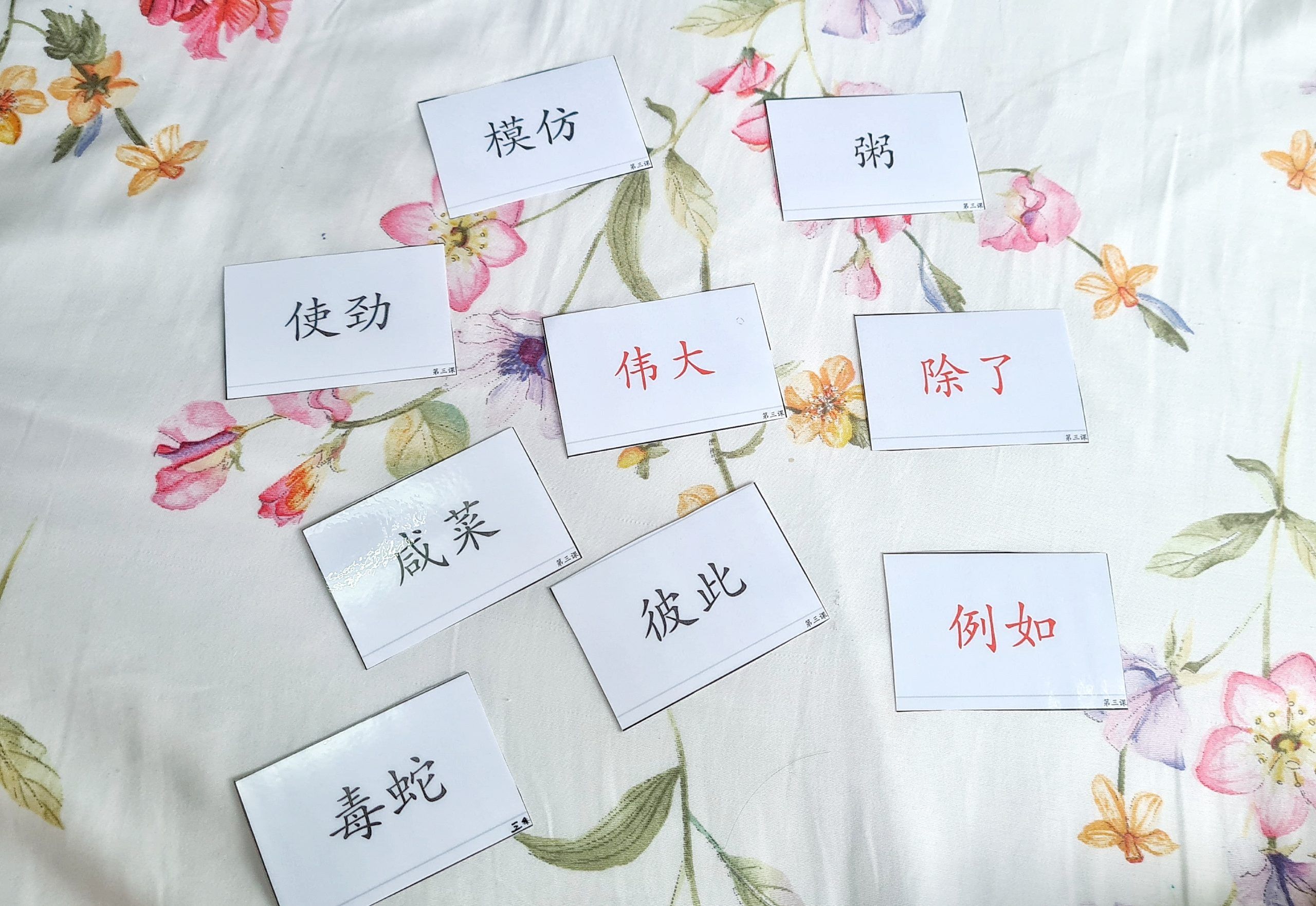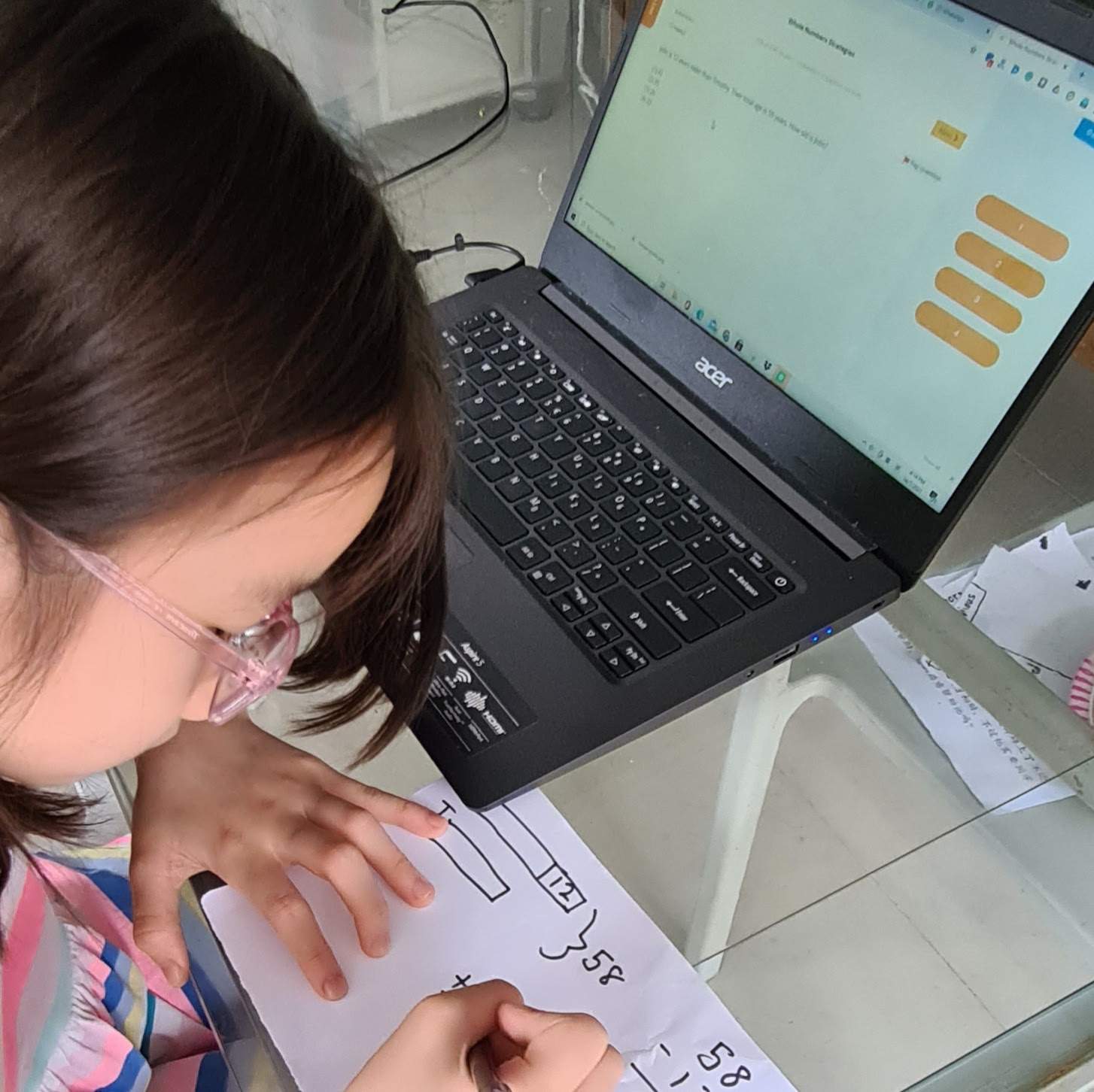This is a critical set of manipulatives which we use daily to aid better understanding of mathematics concepts.
Every child has different learning needs. Just like any other adults who may learn better using mind maps, graphs, or merely reading texts, everyone has their way of learning better.
It took me a while to realise that my children understand better by visually than listening. This is especially so for my son who is currently in Primary 2 and is learning more complex calculations such as addition and subtraction in hundreds (with regrouping involved), as well as problem sums that involve multiplication and division.
Introducing Base Ten
Base Ten blocks are a set of four different types of blocks that, when used together, have helped us see what a number looks like and understand its value.
Our Base Ten Blocks set consists of:-
One workbook
One “1000” block
Ten “100” flats
Fifty “10” rods
One Hundred”1″ cubes
By manipulating the blocks, my children have better visually understood how numbers add up together, subtracts, multiply and divide. Base Ten blocks can even be used for learning fractions and decimals.
In this post, I will cover from addition to division and will follow up with other topics after we encounter and work out how Base Ten blocks will help my children.
Why I choose Base Ten blocks.
I previously tried drawing out the sum stories before, as well as using a set of colourful sticks where each colour represents a place value. However, the methods were not ideal. Drawing the stories was the cheapest way. As the numbers got bigger, we had more to draw. Both the parent and child get tired out drawing and redrawing. As for the coloured sticks, they kept rolling around and were distracting. These sticks certainly didn’t help the children to visualise the values very well.
Finally, I decided to invest in Base Ten blocks.
The blocks are simple to understand. One rod has ten cubes, meaning that it has a value of 10. One flat has 100 cubes, representing a value of 100.
Guiding the children in the Mathematics homework became easier. We use it every day for their schoolwork and Koobits practices. In fact, I checked with them before I bought it. Their school uses Base Ten blocks to aid learning too.
Also, read my post on Koobits and why it is also our important tool for mastering mathematics.
How to use Ten Base Blocks.
Addition
Let’s try out the question.
Step 1: Pair up the problem on a place value table. You can create a place value table at home.
You can also print out a place value mat from here. Please set orientation as Landscape at A3 size.
Step 2 – Write the number vertically on the placemat to enhance clarity.
Step 3 – Let’s add the Ones place first. 7+5 =12. Now that the value is more than 10, we move ten cubes into the Ten column. I like to replace the ten cubes with 1 rod subsequently.
From here, the child can see that there are nine rods which mean 9 tens. Explain to the child that 9 tens are the same as 90. Two cubes have the value of 2. Therefore 90 + 2 = 92.
Step 4: Work out the vertical equation on the mat immediate and explain to the child how both methods correspond to each other.
Subtractions
We started using Base Ten blocks when my child took a longer time to conquer his subtraction with regrouping involved. Every child is different and may need help at a different stage.
Let’s try this question.
Step 1: Pair up the problem on the place value mat and write the question vertically on the placemat.
Step 2: Let’s subtract the Ones place first. Since we cannot subtract 6 from 2, we need to borrow a rod of 10 cubes from the ‘Tens’ place and place it in the Ones place. Replace the rod with ten cubes.
Now we have 12 cubes on the ‘Ones’ side and 7 rods on the ‘Ten’ place. Explain to the child the 80 + 2 is the same as 70 + 12.
Step 3: To minus 26 from 82, separate 2 rods and 6 cubes away from the original group and explain to the child that minus means take away.
Count the remaining number of rods and cubes left in the group and explain to the child that 5 five rods have the value of 50, and six cubes are 6. 50 and 6 make 56. That’s the value.
Step 4: To further reinforce the learning, I immediately work out the vertical equation on the mat to help the child visualise the workings with the cubes and rods we just used.
Multiplication
Using the base ten blocks help the child sees the relationship between addition and multiplication, and subsequently the relationship between multiplication and division.
Let’s try a simple question from Koobits.
Step 1: Explain to the child that there are 2 albums in each box. So we use 1 cube to represent an album. If need be, draw out a box for better visualisation.
Step 2: Draw out 5 boxes and place 2 cubes into each box.
Step 3: Count all the cubes and explain to your child that 5 boxes containing 2 cubes each means 5 x 2 = 10, and it is the same as 2 + 2 + 2 + 2 + 2 = 10.
Division
This is the inverse of multiplication. Division was abstract for my son initially. Using the cubes has helped him to understand the concept much better.
Step 1: Start off with 20 cubes and write down names of the friends (A, B, C, D) and explain to the child all the friends have the same number of biscuits.
Step 2: Start distributing the cubes to the friend, one cube at a time. After all the friends get one cube, move on to allocate the second cube to each of them, then subsequently the third, fourth and fifth cube.
Step 3: After the cubes are all distributed, the child will see that all the children get 5 cubes each. Explain to the child that “each” means they all have the same number of cubes.
My children like to use the cubes. I am glad that they see the cubes like some sort of toys and they are motivated to use the cubes to solve their mathematics questions.
See how another primary school makes use of ten base blocks as one of the manipulatives to facilitate learning.
You may also be interested in:
A Fun and Effective Way to Learn Hanyu Pinyin
Introducing the kids to Singapore, her history and Mr Lee Kuan Yew
A Book for the Young Ones on the Water Cycle
An update of our Primary 1 and Primary 2 journey – A series of mini-tests; CCA trials
Hope I have shared something useful here.
Please share if you enjoyed the content.
Don’t want to miss my posts? Subscribe here to get updates from me.


